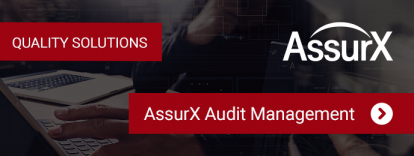March 3, 2022
Since the Covid pandemic, regulators and notified bodies have been doing more remote audits to conduct routine inspections. In fact, it helped the FDA exceed domestic inspections in FY2021 by more than double the number projected. As a result, the FDA and EMA have released guidance on what to expect during a remote audit.
However, remote audits can extend beyond demonstrating compliance with regulations and standards. Manufacturers themselves can use remote supplier quality audits to minimize product risks as they struggle with ongoing supply chain challenges.
This article looks at conducting remote supplier quality audits, as well as which tools to use in the quality management system (QMS) to streamline the process.
Shortages and the Supplier Landscape
Ongoing shortages and supply chain bottlenecks are forcing changes to how manufacturers manage supplier quality programs. When suppliers can’t fill orders, companies need to decide whether to reduce output, modify features, or find new suppliers. Oftentimes, they usually look to suppliers they’ve worked with in the past.
Unfortunately, there is a problem with this approach. In many cases, you may discover that you stopped working with those suppliers for good reason.
So, what should you do in this situation?
For instance, you can start to re-order what you need and hope any past issues won’t occur. However, doing so might create additional risk. Alternatively, you audit their facility to ensure your quality standards are being met.
Using Remote Audits to Mitigate Risk
Remote audits are becoming the norm in surveillance audits. Therefore, it’s worth thinking about how to adopt remote approaches to supplier quality audits.
Benefits of conducting remote supplier quality audits include:
- Lower cost and less time compared with onsite auditing
- Lower risk to auditors and suppliers compared with traveling to the site
- Validating the quality of the supplier’s manufacturing operations
- Speeding up the process of on-boarding a new supplier
- Ensuring your best suppliers maintain your quality performance expectations
- Retaining digital documentation of audit findings for future reference and reporting
The fact that remote audits also makes it easier for suppliers makes it more likely they will submit to an audit. In fact, it is very telling when vendors won’t submit to a remote audit. Suppliers that are focused on quality and transparency should never be opposed if it means increased sales.
Guidance on Remote Audits
How should manufacturers plan and execute remote supplier quality audits? Several regulatory bodies have issued guidance on remote audits that manufacturers can use to conduct their own remote supplier audits, including:
- FDA guidance on remote interactive evaluations for oversight of drug facilities during COVID-19
- Medical Device Single Audit Program (MDSAP) guidance on alternative audit arrangements
- EMA guidance on remote good clinical practice (GCP) inspections during the COVID-19 pandemic
The important thing to note is that you don’t have to reinvent the wheel. You can leverage these guidance documents in your existing supplier management program. That might mean modernizing your process to accommodate remote elements. For example, you may want to access and review supplier documentation in advance, or request a video tour of the manufacturing floor.
How to Plan a Remote Audit
Preparation is crucial when it comes to remote supplier quality audits. You’ll need to ask basic questions such as:
- How long is the audit going to be?
- Will the audit take place via live video conference or just a simple conference call?
- Will you be able to record the audit?
- Will the audit include a video tour of the plant floor and conversations with employees?
- Will you share documents on screen, or require the supplier to provide them ahead of time for review?
- How will you test the technology to verify everything works ahead of time?
- Will you have an IT person onsite during the audit in case of any unforeseen technology glitches?
In general, one of the biggest advantages of a remote audit comes from submitting documentation in advance. The supplier doesn’t need a full team standing by to fulfill document requests. Plus, auditors don’t need to spend valuable time waiting to receive those documents.
Key Areas of Focus
What you choose to focus on during a remote supplier audit depends on the history you have with that supplier. Two areas to look at are incidents and corrective actions.
Expect to see open corrective and preventive actions (CAPAs) in the supplier database. If you don’t see any new incidents, that should raise a red flag. There’s no such thing as perfection, and pandemic-related supply chain problems are affecting everyone. You want to see how effectively suppliers are consistently capturing, classifying, and managing them. In other words, does the supplier’s quality system work in the face of supply chain challenges?
For example, if you find 10 corrective actions still open for over a year with insufficient activity, that might signal a problem. Conversely, it’s favorable if eight have been resolved with a few pending effectiveness checks, and the remaining two have approved extensions.
Other areas to look at within this context would be nonconformances and incoming inspections. The goal is to see the types of event occurrences. For example, look for delivery or order completion issues that could affect materials, as well as how they managed them.
EQMS Solutions to Leverage for Remote Supplier Audits
Several tools within the QMS can help streamline remote supplier audits. All of these areas in the EQMS provide important details on where you should be looking during supplier audits. These include:
- Supplier quality management
- Document management for quality agreements
- Corrective and preventive action (CAPA)
- Change control
- Complaint handling
- Events and nonconformances
By giving you a complete supplier compliance history, you’re not flying blind when it comes time to conduct the audit. Configurable reporting capabilities allow you to see where previous problems happened, how they impacted your company, and what’s critical for moving forward. Developing a supplier scorecard makes the process even easier, giving you a snapshot of supplier performance and calculates risk based on that performance.
Conclusion
While many people initially thought remote audits would be a temporary measure, it’s clear they’re here to stay. This is especially true in light of evolving pandemic risks, providing a safe way to verify quality with zero face-to-face exposure. The cost savings realized are also a significant influence factor.
Conducting remote supplier quality audits with an EQMS offers several benefits in terms of efficiency and cost. Audits enable manufacturers to meet production goals with less risk and enable greater supplier diversity through an efficient, repeatable process to manage partnerships.
Related Reading: Supplier Quality Management: A New QMS-Based Approach
About the Author
Anthony Parise has over 25 years of expertise in quality assurance and regulatory compliance product development including post-market surveillance, CAPA, audits, supplier quality, risk management, validation and enterprise system integration. He has held corporate management roles in the QMS space as well as a long tenure with the vision care division of a multi-billion-dollar manufacturer of pharmaceutical products and medical devices.



